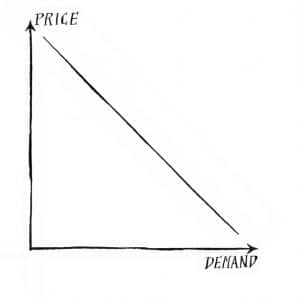I’m regularly asked about pricing, particularly ‘should I put my prices up’? Pretty much unanimously, I’ll answer with a resounding YES.
I might ask a couple of qualifying questions in advance, such as ‘when did you last put your prices up?’ and ‘have you got lots of work coming in?’.
Usually, the person asking knows it’s what they ought to do; so, the question is really highlighting their lack of confidence and knowledge in how to approach instigating a price rise.
There are four simple steps to putting your prices up. The first three are completely within your control. It’s the fourth step that stops people in their tracks. They catastrophise about how none of their clients will be able to afford these higher prices and they will lose all their clients. First, these projections are thoughts not facts. When probed, most freelancers haven’t asked their clients about raising their prices, they are merely assuming the worst and devaluing themselves in the process.
Secondly, it is the natural order of things that you will lose clients. As you gain experience you will grow out of some clients, because they don’t have the budget for your higher rates and/or your greater experience. Simultaneously, and often overlooked, your greater experience means you will also grow in to new clients who will value this greater experience – the challenge is you have to find these new clients.
The 4-step process to putting your prices up is:
Step 1: Actively make the decision to do it – including when it is going to start and how much.
Step 2: Tell your clients you are putting your prices up on [date] and how much.
Step 3: Put your prices up.
Step 4: Client reaction to the price rise.
This can go one of two ways. The client agrees, in which case both of you are happy and your freelancer-client relationship continues. The big challenge for any freelancer is what to do if the client doesn’t agree? At this point there are only 2 options open to you – carry on as before or walk away.
Let’s examine these more closely. If you carry on as before, you are likely to become frustrated and disillusioned with the client and will feel increasingly undervalued. It is likely to be the start of the end of your relationship with that client, brought sharply into focus as other clients agree to the rise.
Walking away is scary. You are actively dropping a client and you may not have the revenue in place to cover that loss in the short term. However, let’s assume you’ve put in price rises to all clients and most have agreed, you are already earning more by dint of the price rises. By walking away, you are creating space in your schedule to look for new clients at the higher price (which they also don’t know is your new higher price) – thereby increasing your turnover further.



